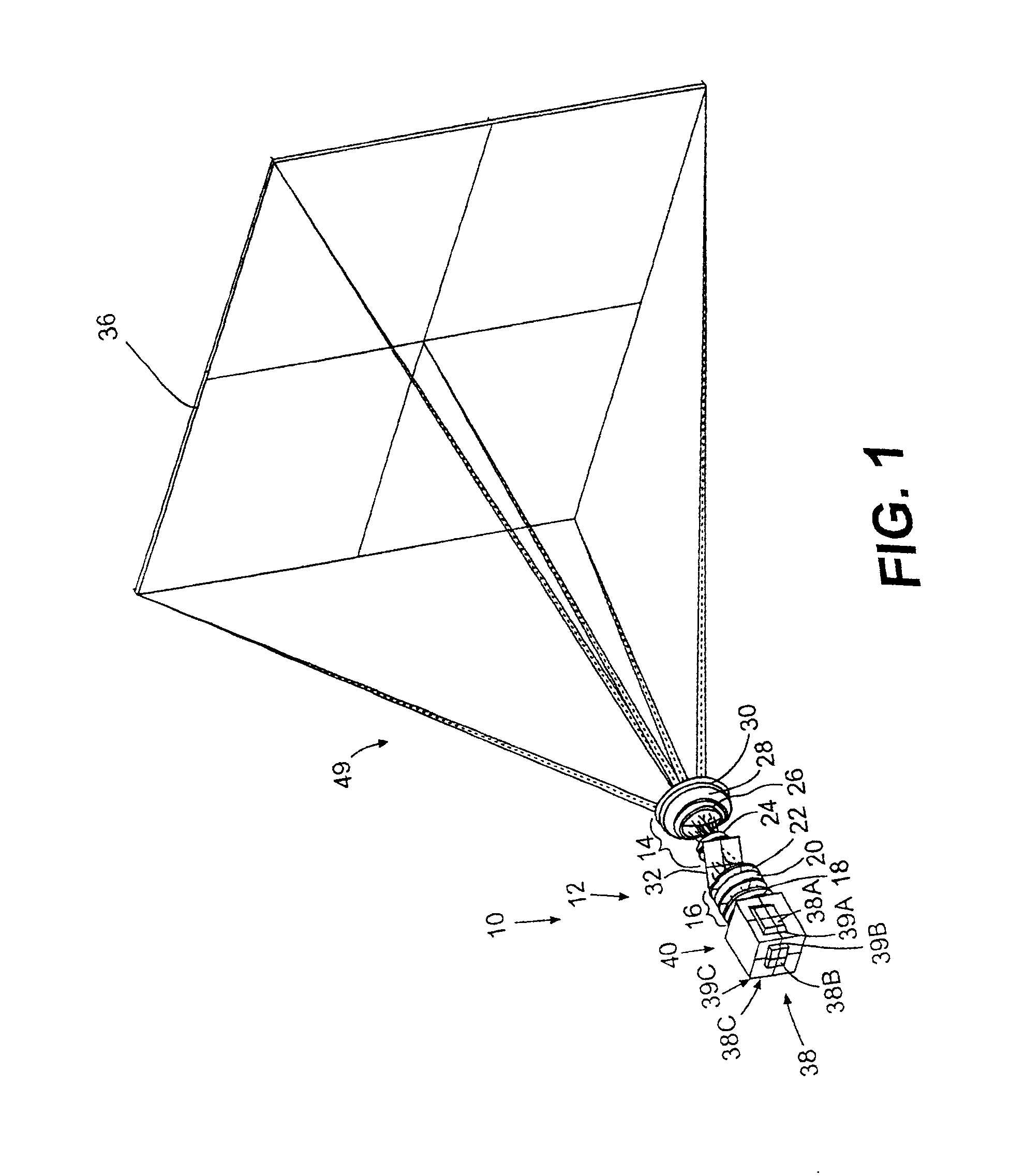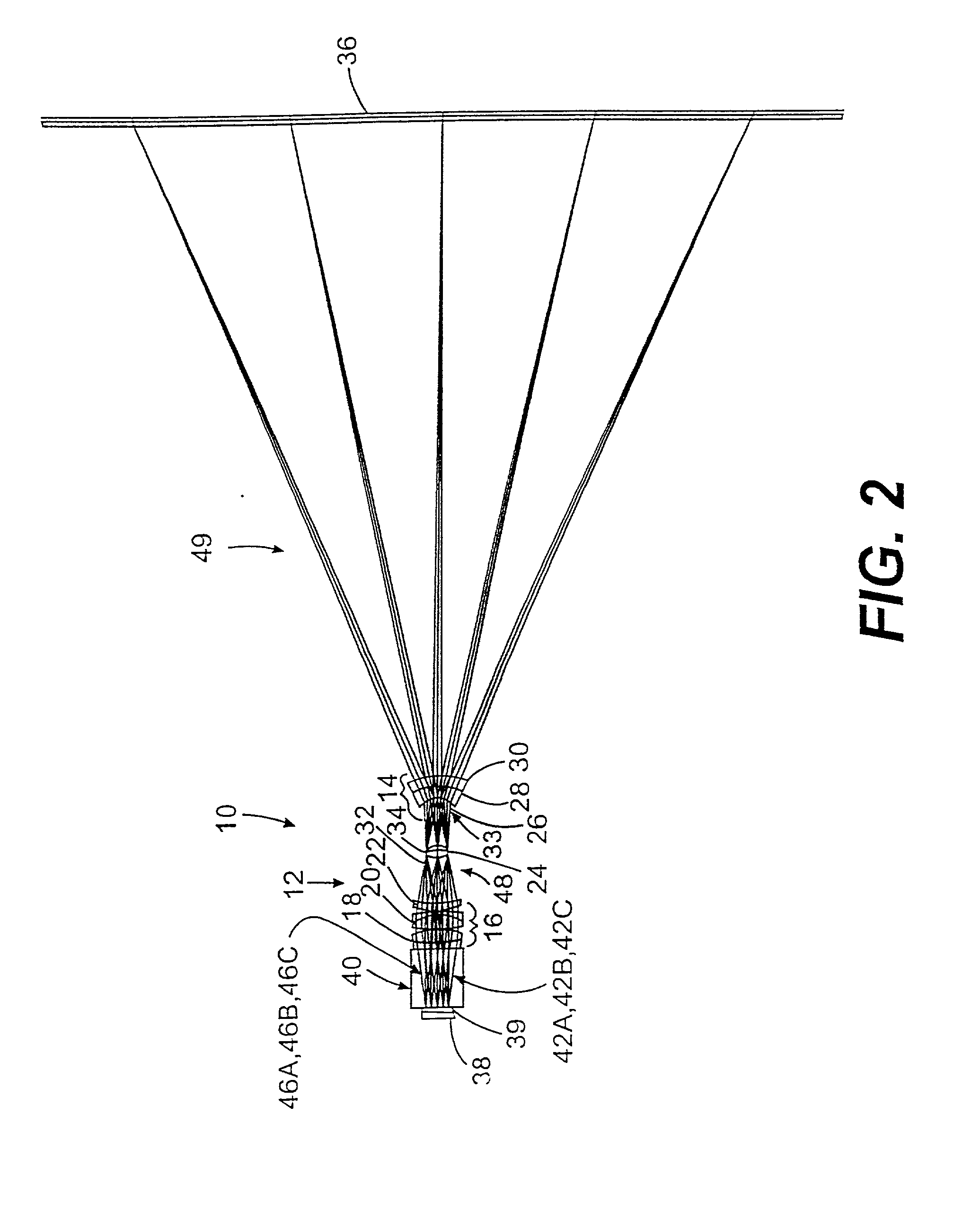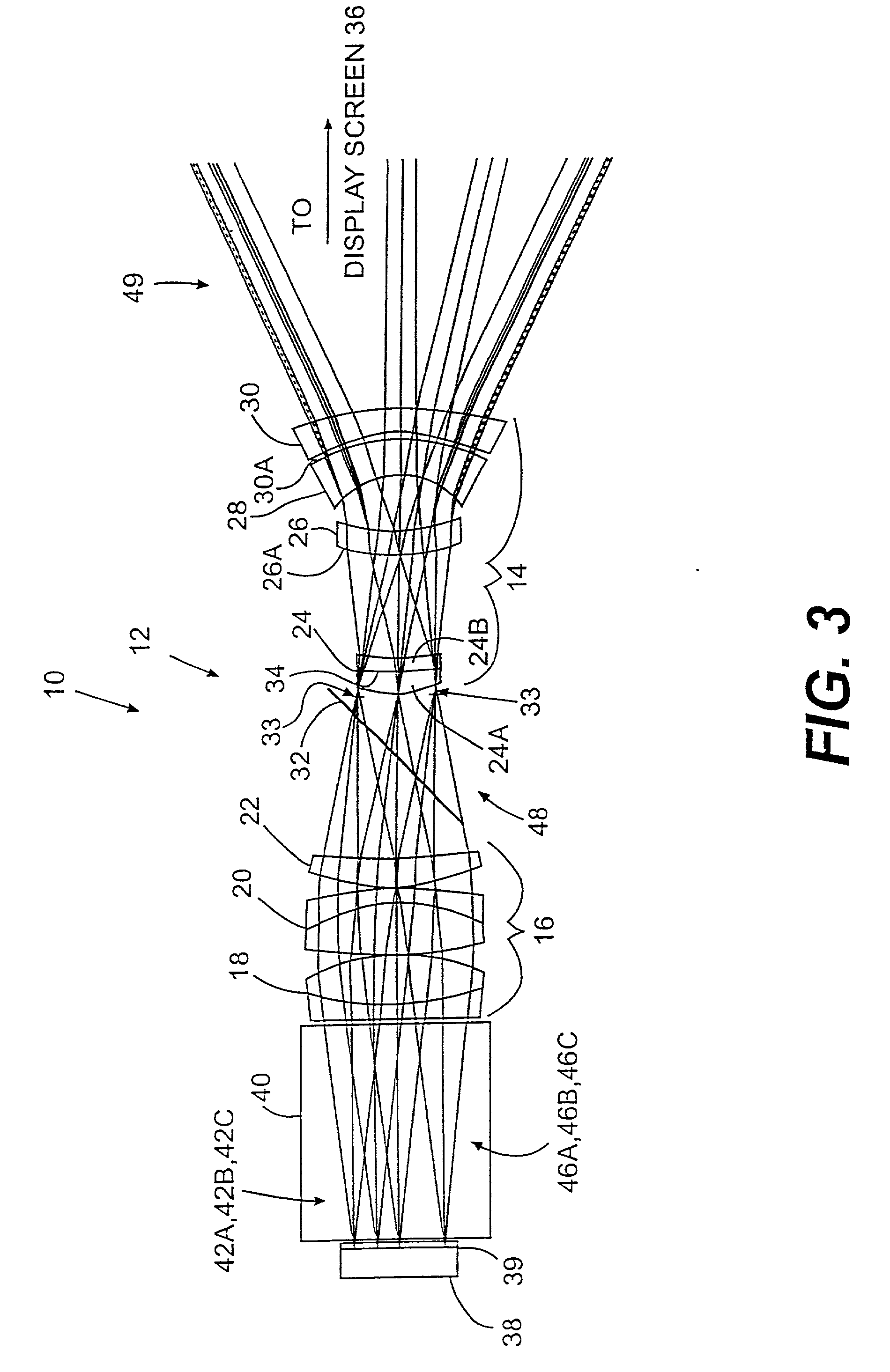Projection Lens and system
a technology applied in the field of projection lens and projection system, can solve the problems of revealing detrimental thermal effects, affecting the efficiency of production,
- Summary
- Abstract
- Description
- Claims
- Application Information
AI Technical Summary
Benefits of technology
Problems solved by technology
Method used
Image
Examples
first embodiment
[0034] FIGS. 1-3 illustrate a reflection-based projection lens system 10 in accordance with the invention. The projection lens system 10 includes a projection lens 12 having a first or front lens unit 14 and a second or back lens unit 16. The front lens unit 14 and the back lens unit 16 are separated by an air gap. The front lens unit 14 has overall zero, near-zero or weak (e.g., negative) optical power with an angular magnification to project over a wide field of view. Other embodiments can have positive or negative optical powers for the front lens unit 14. The second lens unit 16 has overall positive optical power. In the exemplary embodiment shown in FIGS. 1-3, the second lens unit 16 includes lens elements 18, 20, and 22 and the first lens unit 14 includes lens elements 24, 26, 28, and 30. The lens elements 18, 20, 22, 24, and 26 are all positively powered lenses and the lens elements 28 and 30 are both negatively powered lenses. The lens elements 18, 20, and 24 may be doublets...
second embodiment
[0049] FIG. 5 shows a projection lens system 50 in accordance with the invention. The system 50 is similar to the projection lens system 10, and is a variation of the projection lens system 10. A projection lens 52 includes a front or first lens unit 14', which is similar to the lens unit 14 in the lens 12. The front lens unit 14' includes lens elements 24', 26', 28', and 30'. An optional clean-up element 34' can be sandwiched between lens elements 24A' and 24B' of which the lens element 24' is constructed. The front lens unit 14' also includes a remote aperture stop 33'. The elements 24' (24A' and 24B') 26', 28', 30', 33', and 34' are analogous or similar to the elements 24 (24A and 24B), 26, 28, 30, 33, and 34, respectively, in the projection lens 12. The system 50 further includes the imager 38 and the chromatic separator 40.
2TABLE 2 PROJECTIONS LENS SURFACE DATA SUMMARY Dwg. Element No. Surf No. Radius Thickness Glass / Material Diameter Conic 38 OBJECT AT Infinity 1.1 ZKN7 22.4 I...
third embodiment
[0055] FIG. 8 shows a projection system and an illumination subsystem in accordance with the invention. A light source 78B is similar to the light source 78A and includes a lamp 80B (similar to the lamp 80A) and a lightpipe (e.g., a tapered lightpipe or TLP) 82, which is a type of lightguide. The lamps 80A, 80B and the TLP 82 will be discussed further below. Like Table 1, Table 4 summarizes general projection lens 12, 52 data and illumination relay lens system 74 data for the embodiment shown in FIG. 8. Table 5 is a summary of the projection lens 12 (and 52) surface data for FIG. 8, in similarity to Table 2.
[0056] FIG. 8A associates the element surfaces in the second column of Table 5 with the numerical elements in the first column of Table 5 and shown in FIG. 8. Surfaces S13-S18 represent interior surfaces of the exemplary embodiment of the reflecting linear polarizer 32 and are not specifically identified in FIG. 8A, as similarly discussed above for FIG. 4A. No meaning should be a...
PUM
 Login to View More
Login to View More Abstract
Description
Claims
Application Information
 Login to View More
Login to View More - R&D
- Intellectual Property
- Life Sciences
- Materials
- Tech Scout
- Unparalleled Data Quality
- Higher Quality Content
- 60% Fewer Hallucinations
Browse by: Latest US Patents, China's latest patents, Technical Efficacy Thesaurus, Application Domain, Technology Topic, Popular Technical Reports.
© 2025 PatSnap. All rights reserved.Legal|Privacy policy|Modern Slavery Act Transparency Statement|Sitemap|About US| Contact US: help@patsnap.com



